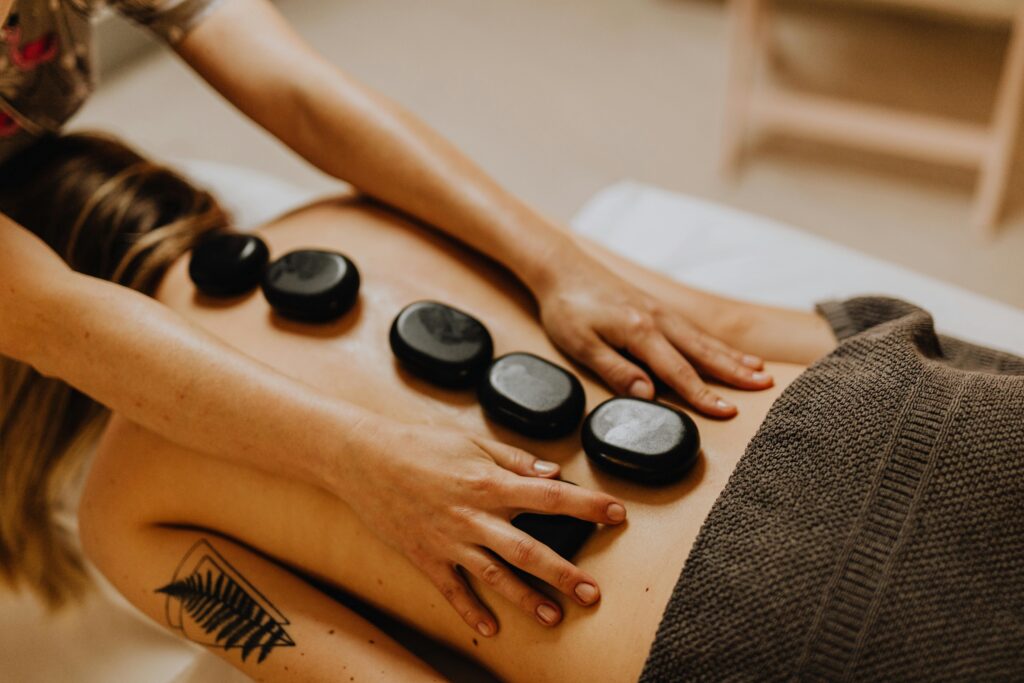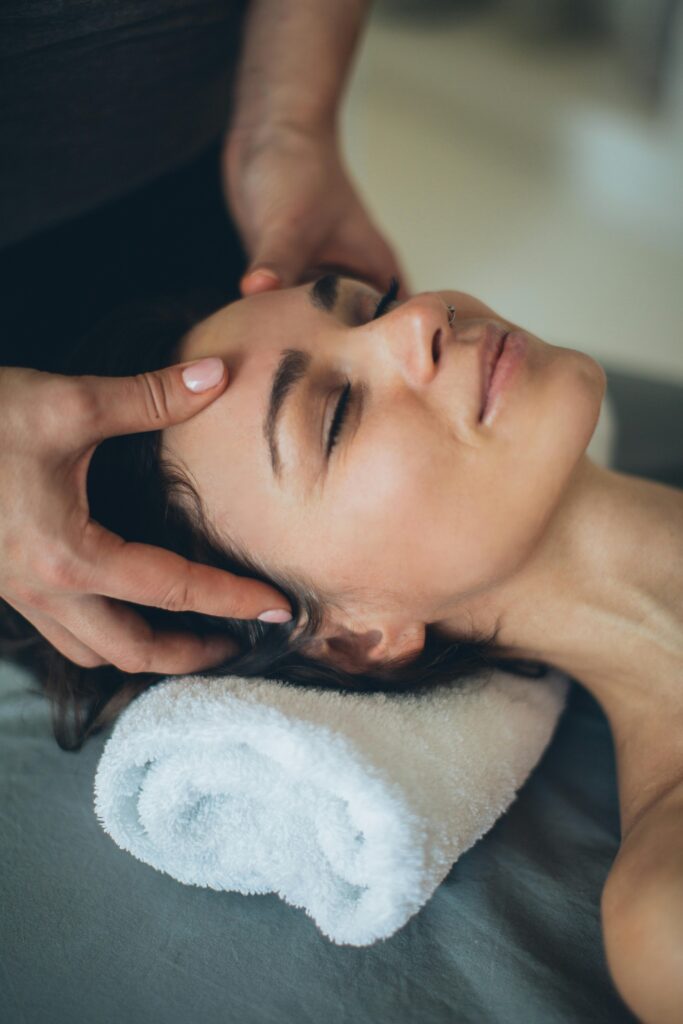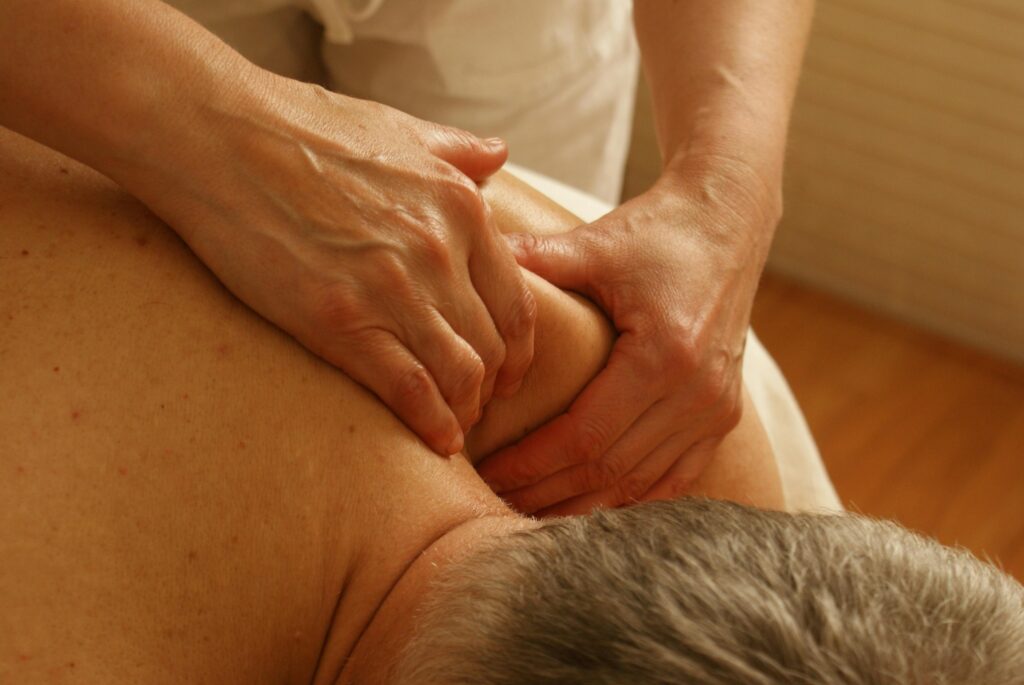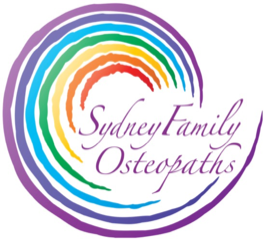Massage itself dates back to many ancient cultures including the ancient Greeks, Egyptians, Chinese and Indians. These nations used massage to treat a wide variety of ailments as a key part of their traditional healthcare systems.
Massage therapy is the practice of kneading or manipulating a person’s muscles and other soft-tissue in order to improve their wellbeing or health. It is a form of manual therapy that includes holding, moving, and applying pressure to the muscles, tendons, ligaments and fascia.
The term ‘massage therapy’ is used to describe a wide variety of techniques that vary in the manner in which touch, pressure and the intensity of the treatment is applied in different ways to address areas of pain, restricted movement and poor circulation.
A remedial massage therapist in Australia studies for 18 months to obtain a nationally recognised Diploma acknowledging that they are fully qualified to provide, monitor and evaluate a broad range of different massage types and adapt their treatments to meet the specific needs of their patients. A remedial massage therapist is able to provide private health fund rebates for those that have cover in their policies.
There are many key benefits of regular remedial massage therapy such as:
- pain relief,
- supporting your immune system to function better,
- both healing faster from injuries and becoming less likely to injure yourself at sport,
- improved posture and mobility,
- improved mood and overall wellbeing.
Remedial massage is a deeply personalised treatment method. It can be delivered as anything from a more relaxing and shallow massage, to a stronger deep-tissue massage.
Your massage therapist will conduct an initial consultation to understand your goal for the session. This may include identifying any particular areas of focus or existing injuries and conditions and addressing any concerns.
Pain relief
We all suffer from episodes of pain which may be because of back pain, stiffness in the joints such as knees and shoulders, or headaches at various times in our lives. Whether that is because we are growing teen, enthusiastic sports players, over-worked staff or aging gracefully.
The pressure applied through remedial massage stimulates the body’s circulatory system, improving blood flow. Lactic acid is a byproduct of energy production in muscles, particularly during intense exercise when oxygen is limited, and it’s often associated with muscle fatigue and soreness.
Massage can stimulate the release of endorphins which are the body’s natural pain relievers. Massage may also help “close the pain gate” by stimulating competing nerve fibers and impeding pain messages to and from the brain. Techniques such as deep and soft tissue massage and trigger point therapy can help release muscles around the affected area. Which can also reduce direct pressure on the nerves which are responsible for the sensation of pain.
Remedial massage can be beneficial for joints as well as muscles. As tension in muscles around a joint is released, the range of motion of the joint improves.
For individuals who suffer from chronic headaches or migraines, massage therapy offers relief. By targeting the neck, shoulders, and head, massage helps relax muscle tension and improve blood flow, reducing the frequency and severity of headaches.
Immune system function
When we are stressed our body tends towards being hyper-aroused and the sympathetic nervous system is stimulated (the fight or flight mechanism). Key actions of the sympathetic nervous system are to increase heart rate and blood pressure, dilates pupils, increases our breathing rate, reduces digestive activity and shunts blood flow to muscles and away from non-essential organs.
Remedial massage also triggers the release of serotonin – a neurochemical linked to the production of melatonin which is responsible for winding the body down for sleep. Which encourages our parasympathetic nervous system (rest and digest) and combats the hyper-arousal. Key actions of our parasympathetic nervous system reverse the key actions of our sympathies nervous system – restores the body to a calm and composed state and prevents it from overworking.
Massage helps reduce the levels of stress hormones, such as adrenalin, cortisol and norepinephrine. Studies indicate that high levels of stress hormones impair our immune system.
Massage also stimulates the lymphatic system, which is part of the immune system, and keeps body fluid levels in balance and defends the body against infections.
Injury recovery and avoidance
Manually manipulating muscles aids the healing process by improving circulation, breaking down scar tissue, and lengthening the tissues as they heal. More blood flow results in quicker healing as the body flushes out toxins and repairs the damaged tissue.
Sports massage is often sought by athletes as a means of injury prevention and treatment. Stretching, relaxing, and loosening muscles during a massage helps improve muscle condition. This form of pre-habilitation reduces the muscle’s likelihood of damage during exercise and the need for rehabilitation afterwards.
Improved posture and mobility
In this day and age we are all prone to postural fatigue – whether that is because of far too much time at a desk, having a manual occupation, or carrying kids and shopping. We tend to slump our shoulders and drop our head posture forward over time. Our muscular system is designed to moves us by switching on and off, but poor posture is often a result of our muscles having to switch on for longer periods in bad positions which makes them tight and tired.
Muscles can become tight as a result of stress, overuse, injury and dehydration. The increased blood flow stimulated by remedial massage can help release tight and overworked muscles. It can also reduce spasms and assist in tissue regeneration at the muscle.
Improved mood and overall wellbeing
You’re probably familiar with the deep relaxing sensation that a massage delivers. This effect promotes the release of endorphins – the brain chemicals (neurotransmitters) that produce feelings of wellbeing, which lower adrenaline and cortisol levels (stress hormones). Massage also lowers the heart rate and reduces muscle tension, which is what’s often associated with the ‘calming’ sensation.
Massage not only relaxes the body but also clears the mind. By reducing stress and anxiety, improving sleep, and increasing overall well-being, regular massages can enhance mental clarity and focus. This allows you to approach tasks with improved concentration and productivity.
It’s important to take time out for ourselves in this busy world to do things to help reset our bodies and increase our energy so we feel revitalised and ready to face the next challenge.



Different types of massage
Different types of massage may include:
- Remedial – is the objective assessment, treatment and rehabilitation of the signs, symptoms and causes of biomechanical dysfunction or injury, using specific mobilisation techniques, in order to restore normal health and function.
- Therapeutic – also known as ‘Western’ or ‘Swedish’ massage. One of the most popular forms of massage in Australia, this technique is designed to promote relaxation and improve blood circulation.
- Lymphatic drainage – a gentle whole-body treatment which relaxes the nervous system and aids the body’s immune system.
- Hot stone massage – For this kind of massage, the therapist places warmed stones on certain areas of the body, such as acupressure points. The stones may be used as massage tools or temporarily left in place. Used along with other massage techniques, hot stones can be quite soothing and relaxing as they transmit heat deep into the body.
- Sports – this is an application of massage, not a particular massage technique. The type of technique or treatment applied is dependent on the nature of the stage of training or competition, sports injury or condition and the assessment of the remedial massage therapist. Sport massage is a blend of techniques that aim to enhance performance and help overworked muscles to recover quickly.
- Deep tissue massage – this technique concentrates on the deeper layers of muscle tissue with the aim to release the chronic patterns of tension in the body, through slow strokes and deep finger pressure on contracted areas, by either following or crossing over the muscle fibres, fascia and tendons. The techniques can include Trigger Point Therapy, deep tissue massage and stretching, thereby creating an improved range of motion through the joints.
- Myofascial release – Your fascia is a connected web of tissues that supports your muscles, bones, organs, and other structures within the body. Gentle pressure on specific areas of the body can release tightness within the fascial system. The therapist may use their hands, fingers, elbows, or specialized tools to apply pressure and stretch the fascia in a way that encourages it to return to a more relaxed state.
- Pregnancy massage – During pregnancy, your body goes through major changes. Pregnancy massage can help with these changes by reducing stress, decreasing arm and leg swelling, and relieving muscle and joint pain. Massage may be particularly helpful during a time when medication and other medical options may be more limited. Using specially designed massage pillows, the massage therapist will help you get into a comfortable position for this type of massage.
- Aromatherapy – essential oils made from selected flowers and plants are added to the massage oil for their particular therapeutic properties. For example, the scent of sandalwood is thought to reduce nervous tension.
- Reflexology – based on the principle that certain parts of the body reflect the whole. Reflex points, which relate to all parts of the body, can be found in the feet, hands, face and ears. These points respond to pressure, stimulating the body’s own natural healing process.
- Shiatsu – an oriental massage technique that aims to improve energy flow by working certain points on the body. The underlying principles of shiatsu massage are similar to those of acupuncture.
What should I do after a massage?
Preferably as little as possible!
Take time to rest relax and recuperate, drink lots of water to continue to help the lymphathic system process any toxins, maybe have a warm shower or bath to continue to improve circulation. Sleep well and hopefully feel more refreshed resilient when you wake up.


